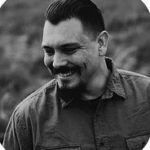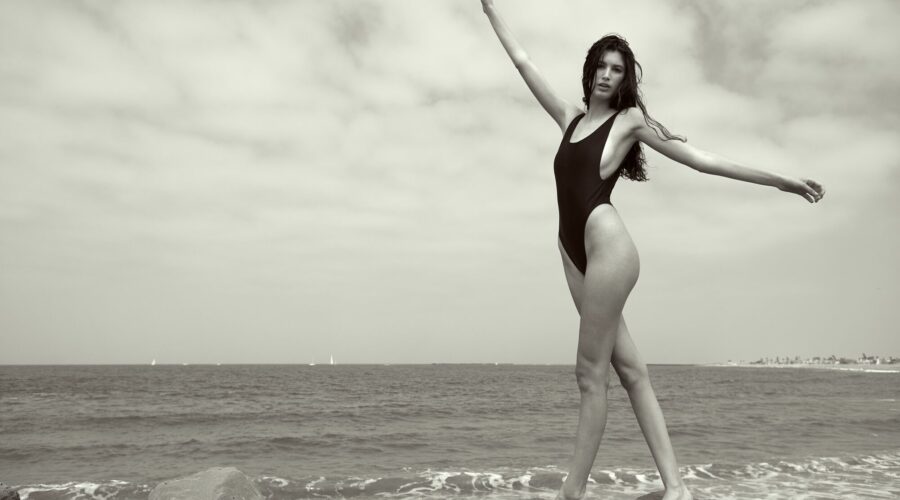POST PRODUCTION WORKFLOW
POST PRODUCTION WORKFLOW
PART III: RETOUCHING IN PHOTOSHOP
By Patrick Patton
NON-DESTRUCTIVE EDITING
We want to create a new layer for every single action that we do, always leaving an out for ourselves so that we are able to go back to the previous step and start again if we need to. This is called non-destructive editing, a method for preserving all previous edits safely as we go along.
RETOUCHING SKIN
The first step that I do is to smooth out the skin. I do this by using the HEALING BRUSH, the SPOT HEALING BRUSH, or the CLONE STAMP TOOL. They are similar instruments with subtle differences, and they are each useful for certain purposes. Play around with them and find out which one you like to use in each circumstance that you encounter. The goal here is to create a natural look, so we want to keep our changes very subtle.
DODGING AND BURNING
We want to create an adjustment layer for DODGING and another adjustment layer for BURNING. To do this, we create a new curves adjustment layer and use the curve to brighten/darken it up significantly. The we will click on the layer mask and hit COMMAND-I (on a MAC) to invert the mask. We then use the BRUSH TOOL at 10% opacity and 10% flow to mask in the dodge/burn effect where we want it, and to the extent that we want it. I forgot to mention in the video, but it sometimes helps to apply a GAUSSIAN BLUR effect at about 16% to each of these layers once you are finished. You can also mess with the layer opacity to fine tune it. Again, don’t go overboard with these effects or your photo will look “Photoshopped”
LIQUIFY
Next, I will use the LIQUIFY TOOL if needed. BE VERY CAUTIOUS not to overdo it here. Use this tool as little as possible and keep everything looking natural because it is easy to get tunnel vision and go crazy with this tool. It helps to zoom out and look at the “big picture” regularly.
COLOR
I always start with a HUE/SATURATION adjustment layer to get things perfect. If there is a sky or water, I will be messing with the blues to get the desired mood. If there are trees, forests, I will be If I am dealing with skin, I will mostly be using the red and yellow hues to dial it in to exactly the tone I want. This can really make your model look pretty wacky if you overdo it, so once again, subtlety is the name of the game.
After this, I use a COLOR BALANCE adjustment layer to adjust the highlights, shadows, and midtones. This is where one area where you can get pretty creative and really put a signature on your work. A little bit goes a long way in altering the mood of your image with this tool. One thing I like to do is group the HUE/SATURATION + COLOR BALANCE layers together, and then duplicate the layers into their own PSD file to keep for the other images in the story. This will make sure that every image has the same color treatment and will give you a consistency across your fashion story. Don’t be afraid to adjust from there, because chances are that some images will need it. For example, the color treatment that looks great on a wide shot might be a bit much when applied to a tight shot, etc. Use your instincts and your artistic eye to fine tune your images until they are perfect and ready to share with the world!

Patrick Patton
I am a California-based photographer of people. I work out of California’s Central Coast, home to some of the most incredible beaches in the world. I have always enjoyed the pursuit and the challenge of creating and capturing beauty, whether it be through music, drawings, storytelling, or my favorite medium of all: photography.
Spread the word
Post-Production Workflow – In The Field (Part 2)
- October 29, 2018
- 2018, Fan Feature, Patrick Patton, Podcast
In part two of the series Patrick will show the process of importing, culling, editing and exporting the photos.
Daniela Rettore (Guest Feature)
- September 10, 2018
- Guest Feature
As a first guest in our new series we meet the amazing Italian fashion photographer Daniela Rettore. She is working with one of the biggest magazines in the industry such as ELLE, MARIE CLAIRE , L’Officiel Suisse, L’Officiel Ukraine and many other.
In the Shadows – by Kim Fisher
- May 10, 2019
- Kim Fisher
“In the right light, at the right time, everything is extraordinary.” – Aaron Rose





1 comment on “POST PRODUCTION WORKFLOW”